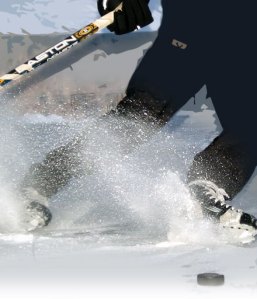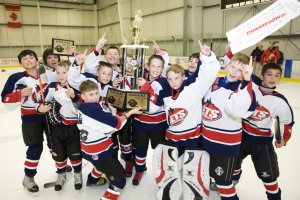The Sept. 7 airline crash in Russia that claimed the lives of 44 people, including a professional hockey team, staff, and coaches, rocked the entire hockey world from Europe to North America. The disaster also touched lives here in west Michigan. Three of the crash victims spent time playing for the Grand Rapids Griffins, the Detroit Red Wings AHL affiliate. Former Griffins Pavol Demitra, Karel Rachunek, and Stefan Liv were members of Team Lokomotiv of Russian’s Kontinental Hockey League (KHL). A fourth Lokomotiv player, Ruslan Salei, was a former Red Wing. Their head coach, Brad McCrimmon, was once a Detroit Red Wings assistant coach.
Travis Richards, who spent 10 seasons with the Griffins, knew players who were travelling on the plane that crashed shortly after takeoff in Yaroslavl, Russia on its way to Minsk for the opening game of the hockey season. Now retired, Richards is a co-director for the Michigan Nationals youth hockey program out of Holland (Formerly the Holland Ice Dogs).
Advertisement
“It was really sad for me,” said Richards. “I played with two of the players. Karl Rachunek was my defense partner for a season, and Pavol Demitra was also a teammate of mine. Both of them were young and still improving at the time, and spent a year with us before moving on to play in the NHL. They were both great kids and hard workers with successful hockey careers.”
A tribute during the regular season is planned for the former players who were killed in the crash, according to a spokesman for the Griffins. Other tributes are sprouting up across Michigan. To honor the memory of Team Lokomotiv, one west Michigan youth hockey program has dedicated their 2011-12 season to those who died. The Michigan Nationals 99 Pee Wee AA team played their first pre-season games in the Cleveland area the weekend after the crash, wearing helmet stickers that read “In Memory of KHL Team Lokomotiv.”
In addition to wearing the special helmet stickers, the team presented their head coach, former NHL, Muskegon Fury, and Russian League player Sergei Kharin with a flag commemorating those who perished. Kharin, who is from Russia, had friends on the plane.
“I knew pretty much all of the coaching staff,” said Kharin. “I knew Ruslan Salei, and a couple of other guys. I’ve played against some of them, too. A lot of them were a younger generation than me, but I still had a lot of good friends there. The whole hockey world is really in shock right now.”
Kharin was touched by his team’s decision to dedicate their season to Team Lokomotiv. “That’s awesome. I take that very personally that our boys and our parents give that kind of support. Our boys recognize that the hockey family is a pretty huge family. It doesn’t matter if you’re from Russia, the United States, or Canada.”










